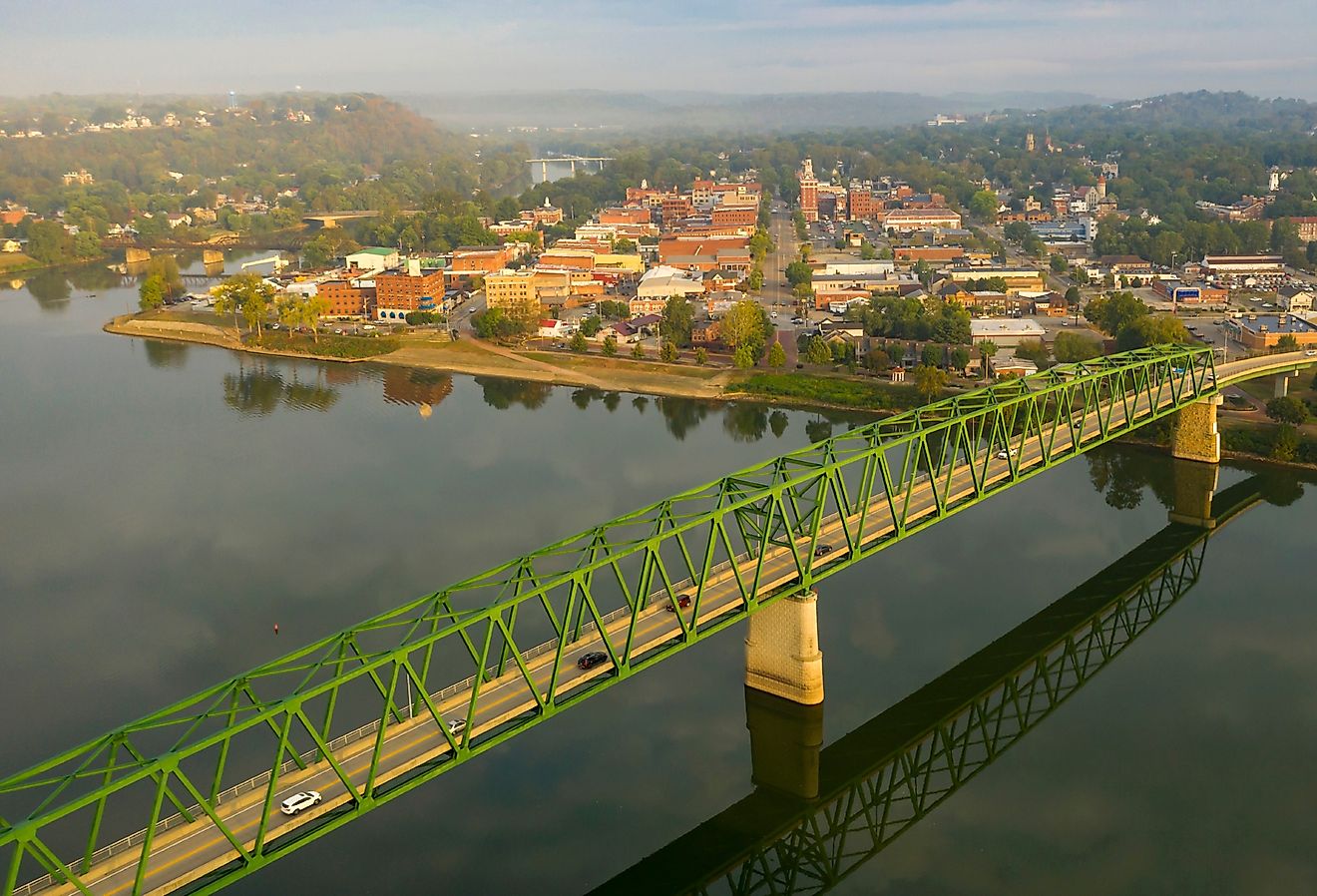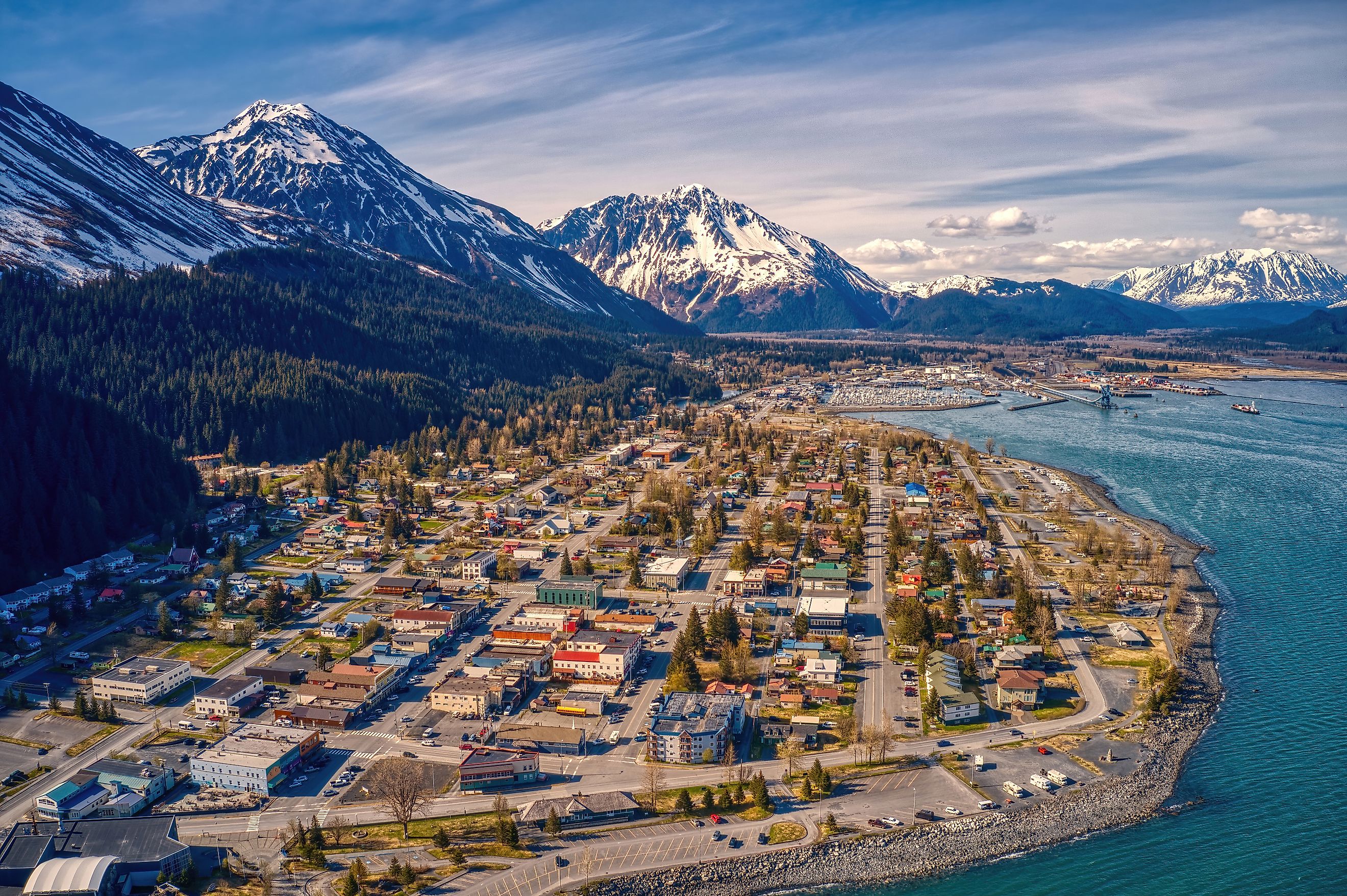
2025's 10 Most Scenic Alaska Towns
Alaska, known as “The Last Frontier,” is a land of awe-inspiring wilderness, dramatic landscapes, and rich Indigenous history. Once home to diverse Native peoples such as the Inupiat, Yupik, and Tlingit, the region later became a Russian territory before being sold to the U.S. in 1867. Today, it remains one of the most visually striking states in the country, where towering mountains, vast tundra, and shimmering waterways define the land. From the jagged peaks of the Alaska Range to the deep blue inlets of the Inside Passage, the state is home to numerous towns where nature takes center stage. These destinations offer unforgettable views, pristine settings, and direct connections to Alaska’s majestic outdoors.
Seward

Cradled between the Kenai Mountains and Resurrection Bay, Seward is a town defined by its rugged coastline, dense evergreen forests, and icy blue glaciers. As the gateway to Kenai Fjords National Park, Seward offers access to a landscape carved by ice and teeming with natural wonder. Towering peaks surround the town, while the fjords are filled with sea lions, puffins, and the occasional breaching whale. The contrast between the dramatic mountain backdrop and the still waters of the bay creates an ever-changing but always breathtaking vista.
Nearby, Exit Glacier presents one of Alaska’s most accessible glacial experiences. Hikers can follow trails that weave through spruce groves and lead up to the face of the glacier, offering views of the Harding Icefield beyond. The area is rich with natural contrasts, where ancient ice meets new growth and coastal waters meet alpine ridgelines. Whether you’re strolling the shoreline or gazing into the distance from a mountain trail, Seward delivers nature in its most vivid form.
Homer
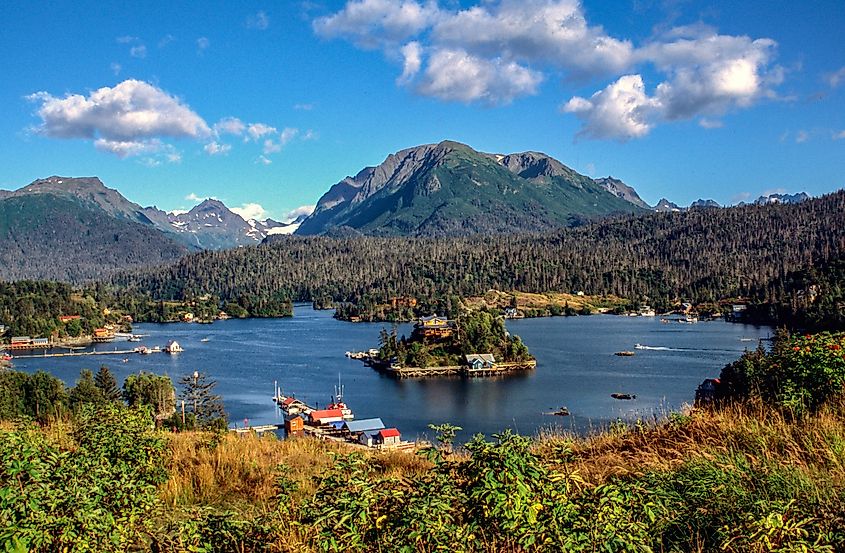
At the southern end of the Kenai Peninsula, Homer offers sweeping views of Kachemak Bay and the surrounding snowcapped peaks. Known for its world-class halibut fishing, Homer's pebble beaches and gentle bluffs meet the dramatic vertical rise of the Kenai Mountains, creating a striking coastal panorama. Bald eagles soar overhead, and the light shifts beautifully across the water as the weather moves through the bay. The scenery here feels expansive and untouched, shaped by tides, glaciers, and forested ridges.
Across the bay, Kachemak Bay State Park offers a remote wilderness experience only accessible by boat or plane. Here, hikers find glacier-fed streams, moss-draped trees, and high cliffs that plunge into turquoise waters. The park’s extensive trail system offers unparalleled access to rugged coastal terrain, rewarding visitors with views of alpine meadows and hidden coves. In Homer, land and sea meet in a dramatic and peaceful union that invites quiet observation and deep appreciation for the natural world.
Valdez

Valdez sits at the head of a fjord in Prince William Sound, encircled by towering peaks and cascading waterfalls. This town is defined by vertical drama, where the Chugach Mountains rise straight from the sea and the air is thick with mist. Known for its extreme snowfall and vibrant seasonal changes, Valdez feels like a place where nature still writes the rules.
Just outside of town, the Valdez Glacier flows into a serene lake surrounded by rock and ice. Trails wind around its edge, allowing for immersive views of the glacier's crevassed surface and the reflective waters below. Waterfalls like Bridal Veil and Horsetail tumble down sheer rock faces in Keystone Canyon, especially vibrant in the spring melt. Every corner of Valdez is steeped in natural intensity—from the green summer hillsides to the brilliant white of winter’s grasp.
Sitka
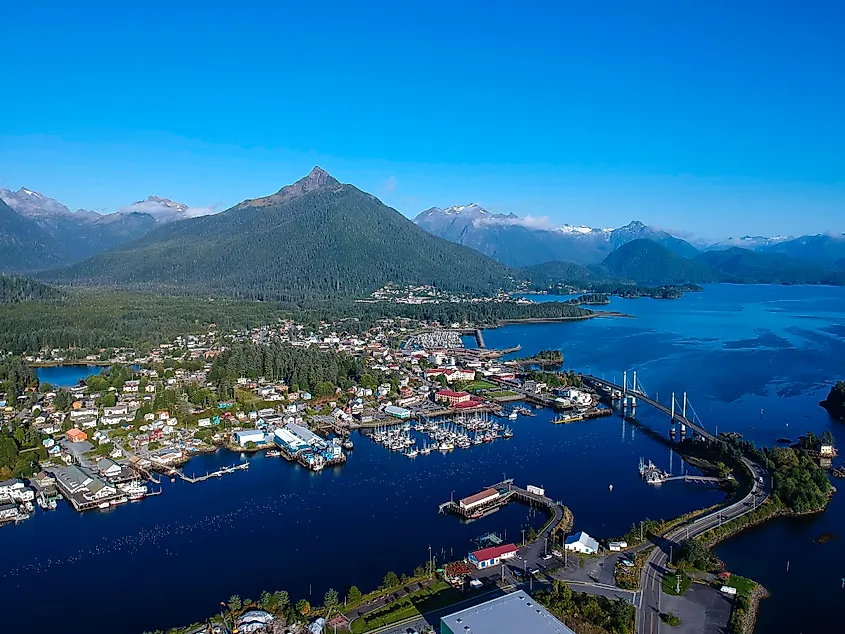
Situated on Baranof Island in the lush expanse of the Tongass National Forest, Sitka combines rugged coastline with misty mountain backdrops. Covering a whopping 17 million acres, the Tongass is easily the largest national forest in the United States, providing a backdrop of ancient spruce and cedar, as well as river systems and an abundance of wildlife. Sitka Sound surrounds the town with shimmering inlets and tiny islands, often draped in low-hanging clouds. The beauty here feels moody and enchanted, like stepping into a living painting.
Further inland, trails lead into the thick rainforest teeming with life. Alpine lakes and hidden waterfalls reward those who venture into the hills, while brown bears, eagles, and deer are regular sights in the wild. Sitka’s dramatic setting is enhanced by its isolation—it can only be reached by air or sea. This remoteness makes the natural surroundings feel even more raw and awe-inspiring.
Talkeetna

Talkeetna sits at the confluence of three rivers with uninterrupted views of Denali rising over the horizon. On clear days, the massive peak dominates the skyline, framed by the lesser—but still impressive—mountains of the Alaska Range. The meeting of rivers creates a fertile valley rich in birch and spruce, giving the area a serene and pastoral charm. The rhythms of the rivers and the shifting light on Denali paint a picture that is constantly shifting and evolving.
You don't have to hike the tallest peak in North America to enjoy Talkeetna's wilder side. The area is home to miles of hiking trails and scenic overlooks, including paths that snake through quiet woods and offer views of braided rivers and tundra. Wildflowers burst into bloom during summer, painting the meadows with purples and yellows. Whether it’s the golden leaves of fall or the icy blue horizon of winter, Talkeetna offers a peaceful connection to Alaska’s heartland, where earth, sky, and water speak in harmony.
Cordova

Cordova is a quiet gem set between the towering Chugach Mountains and the waters of Prince William Sound. With no road access, it remains one of Alaska’s most pristine escapes. Glacial rivers cut through the land, and the nearby Copper River Delta spreads across hundreds of square miles, offering one of the richest wetland ecosystems on the continent. The mountains around Cordova rise like ancient sentinels, their snowy peaks reflecting in still waters.
Childs Glacier lies just beyond the edge of town and is known for its massive calving events. Visitors can hear and feel the thunder as house-sized ice chunks fall into the Copper River. The surrounding forest is thick with alder and spruce, giving way to alpine terrain and slopes covered with wildflowers. Cordova’s raw beauty is enhanced by its seclusion—it’s a town where the land remains dominant, unshaped by crowds or concrete.
Haines

Haines offers a breathtaking combination of coastal fjords and inland mountains, along the deep blue waters of the Lynn Canal. Snow-dusted peaks rise dramatically from the shoreline, giving way to alpine meadows and wooded valleys. Glacial rivers and saltwater bays stretch across the landscape, and the Chilkat River Valley is particularly scenic, renowned for its expansive views and extensive wetlands.
The Chilkat Bald Eagle Preserve is one of the best places in North America to observe these majestic birds, especially in the fall when thousands gather along the river. Hiking trails around Haines reveal glacier-carved ridges, moss-covered forests, and untouched lakes. Every season in Haines brings a different hue to the natural canvas—lush green summers, golden autumns, and crisp white winters all showcase the region’s beauty in unique ways.
Petersburg
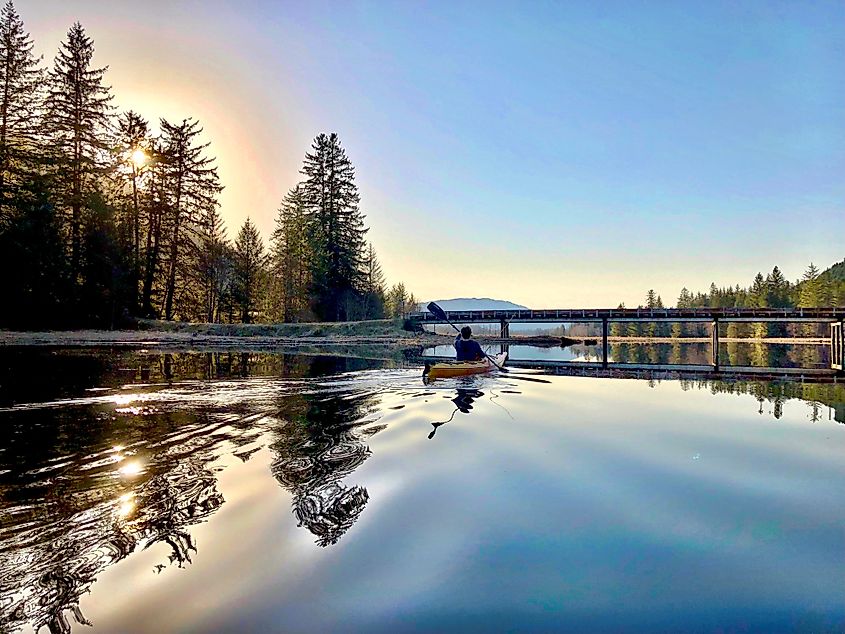
On Mitkof Island along the Inside Passage, Petersburg is surrounded by narrow channels, lush forest, and towering mountains. Often called “Little Norway” for its rich cultural heritage, it is deeply tied to the rhythms of both the sea and the land. Petersburg’s harbor opens into Frederick Sound, where the calm waters reflect the snowcapped mountains and drifting icebergs. The natural setting feels remote and entirely unspoiled.
Accessible by boat, the nearby Petersburg Creek-Duncan Salt Chuck Wilderness offers trails through bogs, temperate rainforest, and alpine slopes. From the highlands, you can see the Stikine Icefield in the distance—a reminder of the glaciers that continue to shape the region. The town’s position in the heart of the Tongass National Forest ensures constant access to one of the most diverse and impressive landscapes in North America. In Petersburg, nature feels both immense and intimate.
Girdwood

Surrounded by the peaks of the Chugach Mountains and set deep in a glacial valley, Girdwood is a town where wilderness and wonder collide. Located along Turnagain Arm, the town is framed by dramatic tides, mountain walls, and dense spruce forest. The terrain in Alaska's recreation captial is defined by steep ridges and deep, wooded canyons, offering endless opportunities for world-class skiing, hiking, and scenic observation.
Nearby, the Winner Creek Trail winds through old-growth forest and crosses roaring rivers. In every season, Girdwood’s surroundings feel cinematic, with glacial remnants that can be seen from the many overlooks in and around town. Wildlife, such as moose and black bears, are often spotted along the trails as well, offering a peek into a hidden mountain sanctuary.
Nome
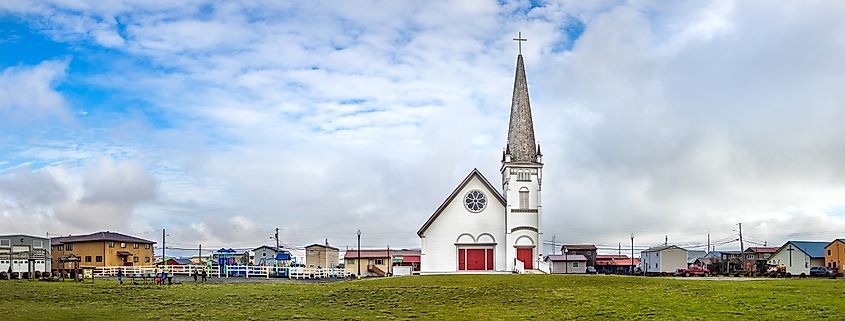
Positioned on the edge of the Bering Sea, Nome offers expansive tundra landscapes and endless views of land meeting sky. This remote town is situated on the Seward Peninsula, where rolling hills, braided rivers, and permafrost terrain create a unique setting unlike anywhere else. During the summer, the tundra comes alive with wildflowers and lush greens, while the sun hangs in the sky nearly all day long.
Beyond the coastal plains, the Kigluaik Mountains offer a rugged contrast to the flat, open land. Home of the world-famous Iditarod sled dog race, the terrain is a mix of glacial lakes and winding dirt roads that stretch into the wilderness, revealing dramatic scenery in every direction. Nome’s beauty is in its solitude and scale—a place where the horizon appears infinite and the presence of nature is uninterrupted. It’s a town built on the edge of the world, where the wild truly feels endless.
Final Thoughts
Alaska’s scenic towns are more than points on a map; they are natural masterpieces carved by ice, wind, and time. From the towering glaciers of Valdez to the misty rainforest trails of Sitka, each town reveals a different facet of the state’s beauty. With their quiet landscapes, abundant wildlife, and dramatic topography, these destinations offer deep, unfiltered connections to the earth. They serve as living reminders of the power and peace found in unspoiled nature.
Whether you’re marveling at Denali from Talkeetna, exploring tidal flats in Homer, or moving across the tundra in Nome, Alaska’s towns invite you to slow down and soak in the stillness. In a world that moves too fast, these places remain timeless. Each one proves that in Alaska, the most beautiful views don’t need to be built; they already exist, waiting to be seen.








